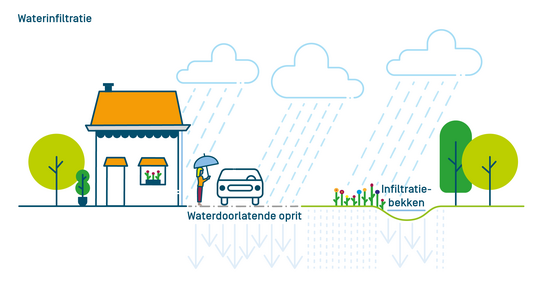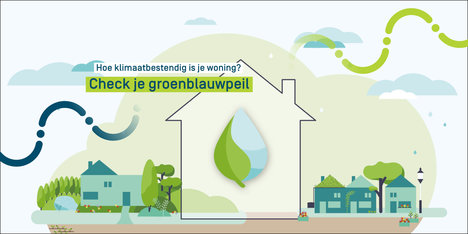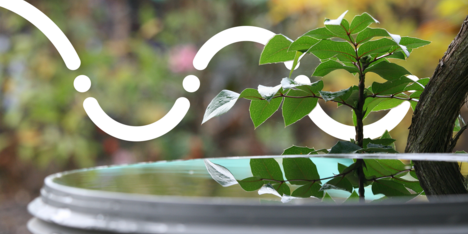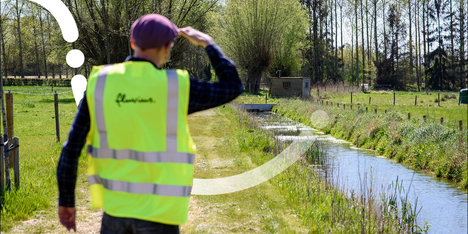Restoring the natural cycle: getting started with water infiltration

What is rainwater infiltration?
With water infiltration, we leave rainwater much more on site on unpaved ground, instead of immediately draining it to the sewer system. This gives the water the opportunity to penetrate the soil and replenish the water reserves there. Because of these reserves, we are better armed against prolonged periods of drought.
What are the benefits of rainwater infiltration?
We prevent flooding
If we immediately drain all that rainwater into the sewer system in heavy rainfall, the sewer cannot handle that amount of water. By allowing the water to infiltrate, we relieve the sewers and also reduce the risk of flooding in streets, gardens and cellars.
You help maintain the groundwater level
How often do you give your garden extra water in dry periods? You might even do that with tap water. Thanks to infiltration, you help maintain groundwater reserves. This way, your garden stays greener longer in dry periods and you save a lot of drinking water.

What can you do?
By (partially) softening additional parts of your site or installing an infiltration system, you give rainwater the opportunity to penetrate the soil in your home. In this way, you contribute to a better water system and a healthier environment. Even small changes in your garden or immediate surroundings can bring great benefits.
Unpaved surfaces (like your lawn)
Create an infiltration basin. That is a shallow ditch or bowl that temporarily collects rainwater and then allows it to infiltrate. If it stops raining, the water quickly subsides.
Semi-hardened surfaces
If the slope of your driveway or terrace allows, you can opt for semi-hardened infiltration solutions instead of standard tiles or asphalt. It is important to adapt the chosen material to the use. As inspiration, we will give you a few examples:
- Grass concrete tiles or water-permeable bricks: perfect for driveways and parking spaces Dolomite
- pavementg (natural hardening of limestone): a garden path or terrace hardens into different types of this ornamental gravel, but also leaves room for infiltration
- Replace tiles with grass and/or plants
An additional advantage of semi-hardened surfaces with plants is that it softens the feeling temperature at high temperatures.
Hardened surfaces
- Water or retention roofs ensure that the water gradually flows away from the roof, and provides cooling in the summer
- A green roof absorbs and purifies the rainwater, isolates and contributes to biodiversity
More options and their advantages and disadvantages can be found on the website of the Flemish Environment Agency.
Is water infiltration mandatory?
In some municipalities, rainwater infiltration is mandatory for new construction or major renovations. Check with your municipality to see what the rules are.
When (re)constructing your driveway, terrace or garden, ask yourself a number of questions before choosing a particular solution:
- What type of soil do I have?
- Is there a high groundwater level?
- Where is hardening necessary, and where not?
This will help you find the most suitable solution for your project.
Is there a premium?
Yes, in many cases you are entitled to a premium for the construction of an infiltration system. This varies per municipality. Check with your local government or check this webpage.



